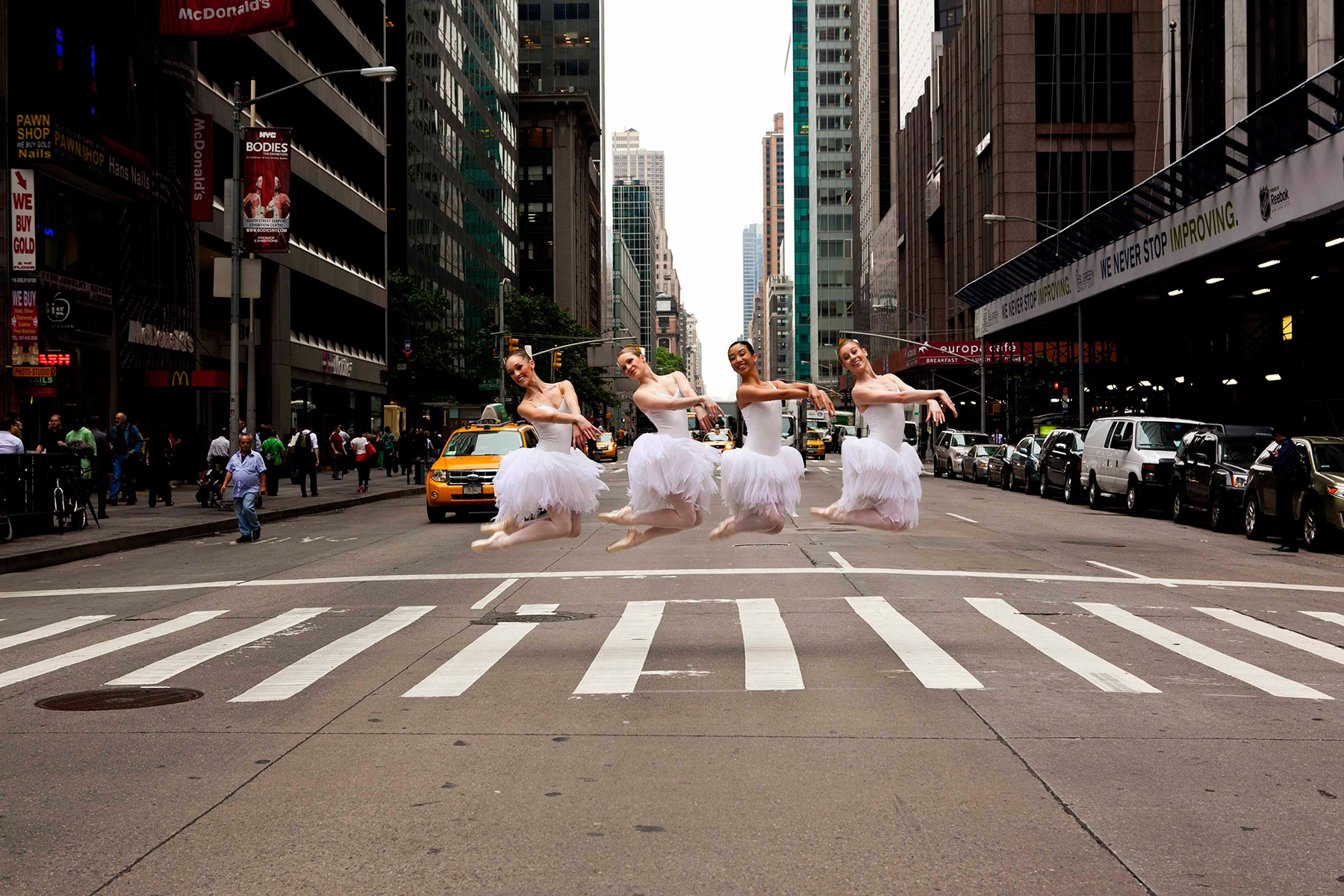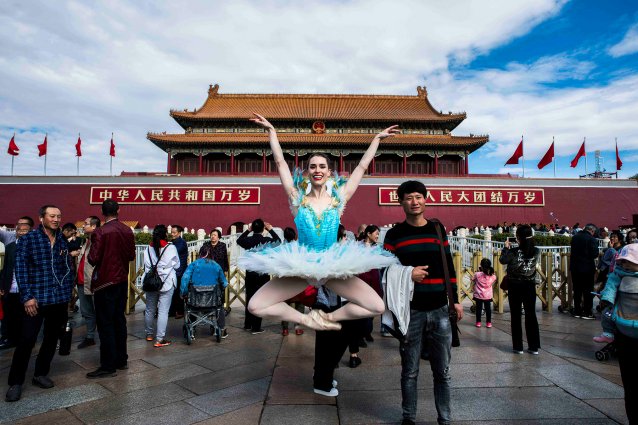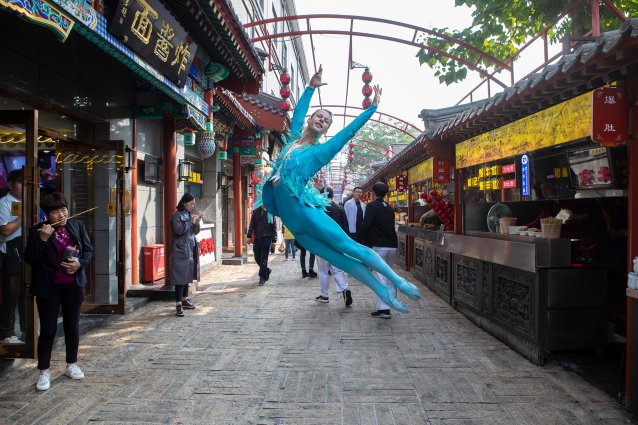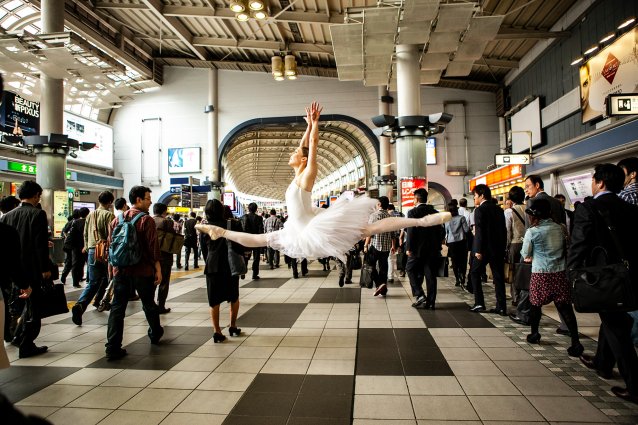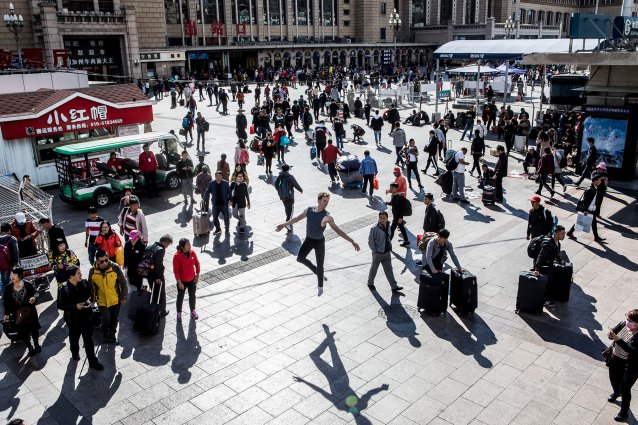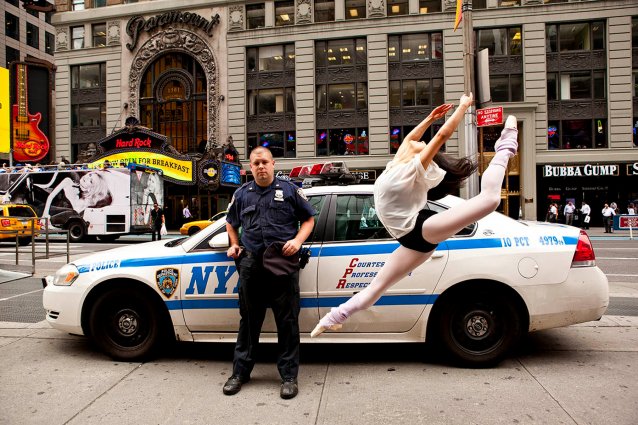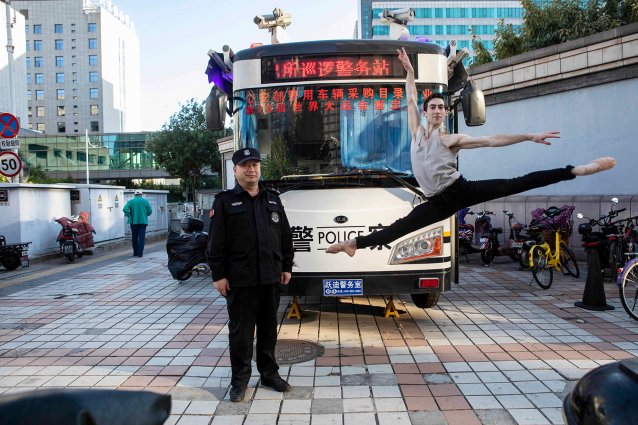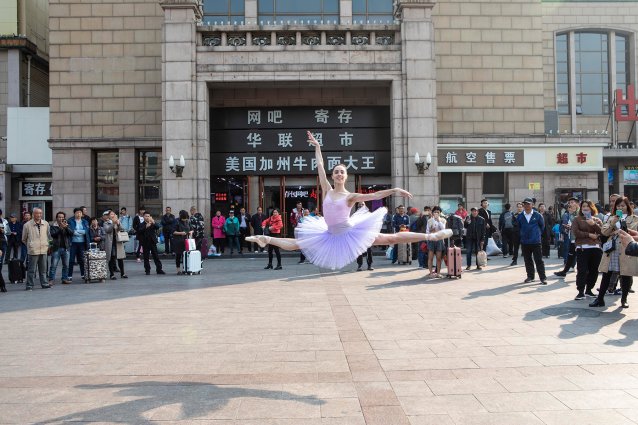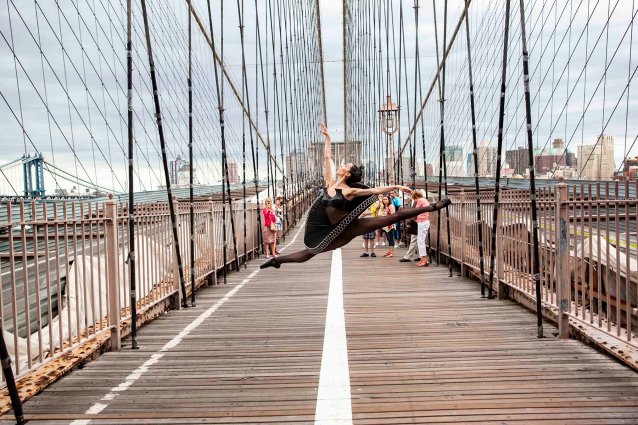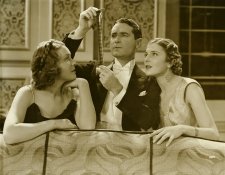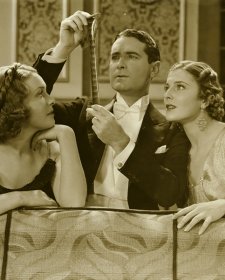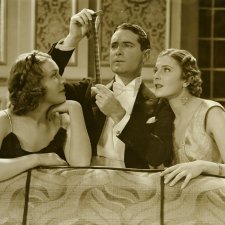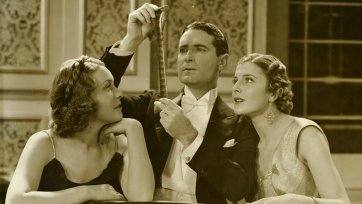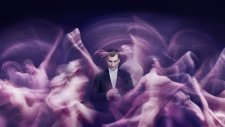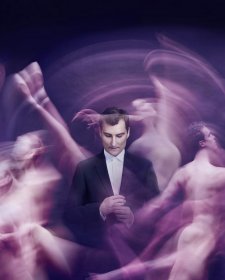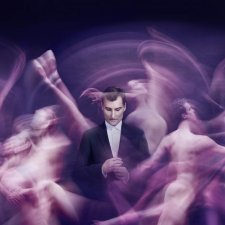‘You’ve made me so happy!’ exclaimed the truck driver. Before his eyes, four Swan Lake cygnets had repeatedly leapt into synchronised suspension above a pedestrian crossing at the corner of Lexington and Fifth Avenues in New York City. The enthusiastic truckie had helped Australian photographer Lisa Tomasetti hold the snarling city traffic at bay long enough for her to get the shot.
Lisa Tomasetti’s visual arts career has spanned a quarter of a century so far. She’s been exhibiting her work for over twenty years, including as a multiple finalist in the Portrait Gallery’s annual National Photographic Portrait Prize, and in its 2017-18 exhibition Starstruck: Australian Movie Portraits. Tomasetti has also worked as a stills photographer on numerous film and television productions, including Shine, Star Wars Episode II, The Sapphires, and Cleverman. As if that wasn’t enough, she’s also spent fourteen years as the official tour photographer for major dance companies, having visited Paris, Tokyo, Beijing, New York, Los Angeles and San Francisco with The Australian Ballet, and accompanying Bangarra Dance Theatre on their North American tour. As tour photographer, Tomasetti captures stills from performances as well as documenting behind-the-scenes action such as rehearsals: ‘The concentration, the dancers’ complete focus and discipline – I love to frame that’.
